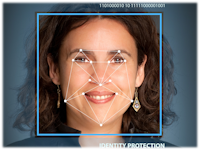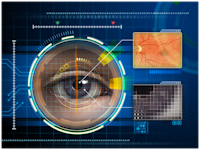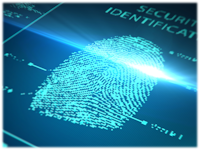-
CSCAN Biometric Identity Booth
September 6, 2013
At the 2013 Science and Technology Showcase, the Centre for Security, Communications and Network Research (CSCAN) demonstrated a variety of biometric techniques and gave visitors to the 'Secure IT' stand an opportunity to create their own biometric identity cards. The booth was also featured at the University's 2014 Safer Internet Day.
Note for parents/teachers: the booth is an educational resource and does not store or communicate any of the data captured in the production of the cards. The images printed on the ID cards are deliberately low quality so that they cannot be used for any other purpose.

Watch the booth in action:
About the biometrics used in the booth
Facial Recognition

- Automation of the main approach that people use to recognise each other
- Possible facial features include the size and shape of the eyes, nose, cheekbones and jaw
- Basic systems can be fooled by presenting a photograph, but newer approaches utilise 3D facial recognition
- Used in mobile phones, at airports, and within CCTV systems for monitoring terrorist watch-lists
Iris Recognition

- An extremely strong biometric approach - 1 in 1.2 million probability of an attacker gaining access!
- Frequently utilises a near-infrared camera to capture a black and while image of the iris
- The iris offers a feature-rich basis from which to identify individuals, and is very difficult to forge
- Expensive and more intrusive than many biometric approaches - used in high security environments
Fingerprint Recognition

- A reliable and strong biometric technique
- The most widely used biometric approach - found on devices such as laptops and mobile phones, and environments such as schools and airports
- Unique features of the fingerprint are called minutiae - ridge endings, islands and bifurcation (splitting)
- Forging is possible on older systems, but liveness tests are now widely incorporated
In all approaches, the technique works by firstly building a profile (template) of the legitimate user, and then comparing against this each time a user presents a sample to be checked for identification or authentication.
Our articles
Home Article page

